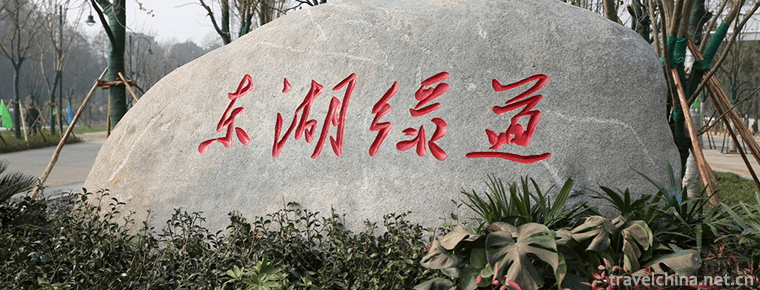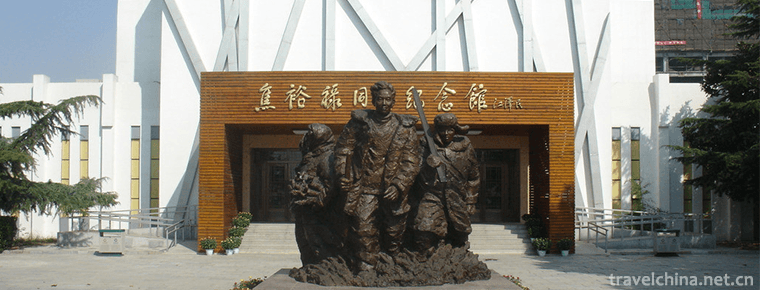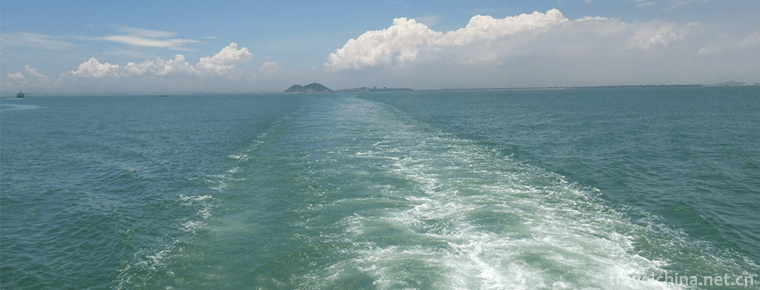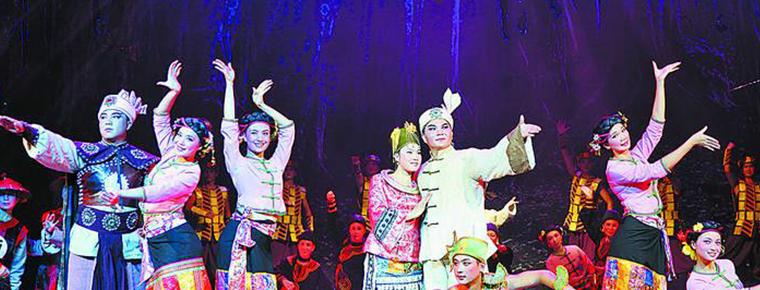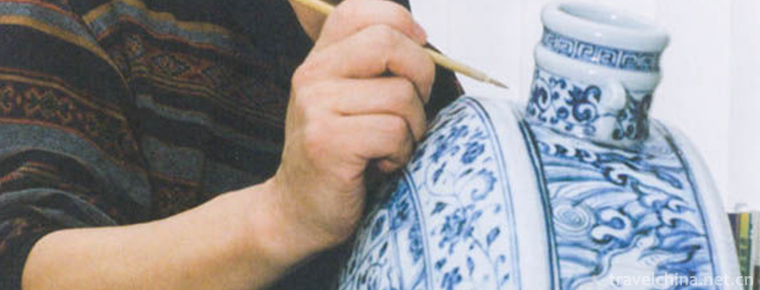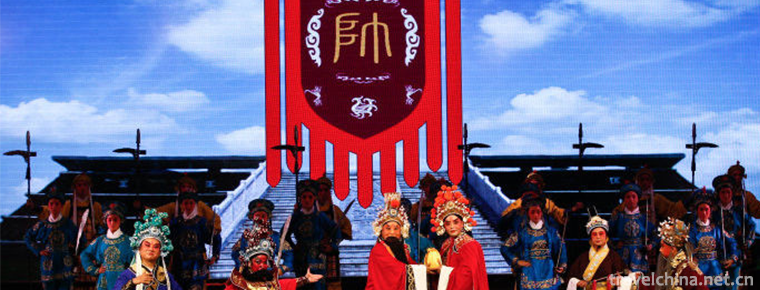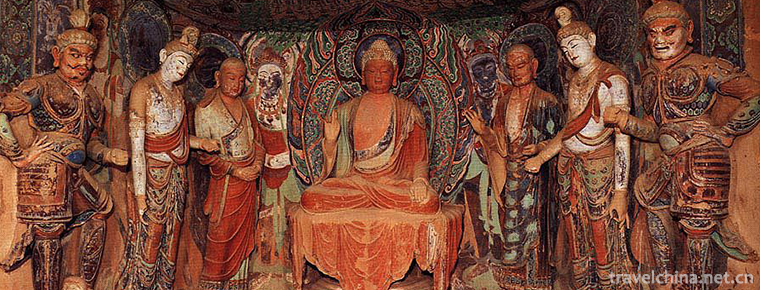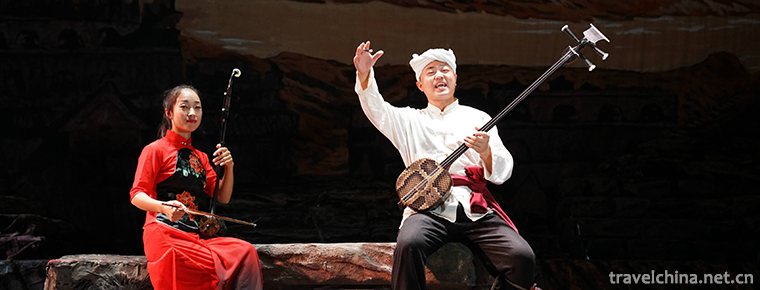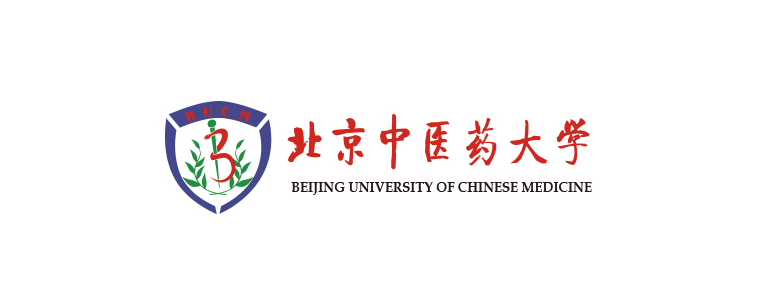Wudang Martial Arts
Wudang Martial Arts
Wudang Wushu is a Chinese Wushu school with a long history and profound knowledge. It is named after Zhang Sanfeng who was founded in Wudang Mountain.
At the end of Yuan Dynasty and the beginning of Ming Dynasty, Zhang Sanfeng, a Taoist of Wudang School, established Wudang School and was respected as the founder of Wudang Wushu.
The state attaches great importance to the protection of intangible cultural heritage. On May 20, 2006, the intangible cultural heritage was approved by the State Council and listed in the first batch of national intangible cultural heritage list.
On June 5, 2007, Zhao Jianying of Shiyan City, Hubei Province, was identified by the Ministry of Culture as the representative successor of this cultural heritage project, and was listed in the first batch of 226 representative successors of national intangible cultural heritage projects.
brief introduction
Zhang Sanfeng integrates the essence of Yi Jing and Tao Te Jing with Wushu skillfully, creating Wudang Wushu with Taijiquan, Xingyiquan and Bagua Palm as the main body, which has important health and fitness value.
After generations of martial artists continue to innovate, enrich and accumulate, forming a major school of Chinese martial arts - Wudang School, known as "North Chong Shaolin, South Zun Wudang".
Wudang Wushu, founded by Zhang Sanfeng in the late Yuan Dynasty and early Ming Dynasty, was founded in Huguangjunzhou (now Danjiangkou City).
Wudang Quan, also known as Neijia Quan, is aimed at improving one's health and self-defense. It has many characteristics and functions, such as advocating meaning but not strength, four or two sets of kilograms, flexibility and rigidity, post-attack, prolonging life, eliminating disease and resisting disease, and increasing wisdom.
Wudang Wushu has spread to all over the world, and has become a sports activity for people to keep in good health and eliminate diseases for a long time.
Wudang Wushu has distinct Taoist cultural characteristics and is a natural combination of Wugong and health preservation methods. It not only has profound traditional Wushu culture, but also contains exquisite scientific principles.
Taijiquan emphasizes "first make your body with your heart" and then "take your body from your heart". Xingyiquan emphasizes "not exert your mind, arrive at your qi and reach your strength". Bagua palm requires to walk around the circle to "turn your mind into your feet". These all embody the Taoist body-building purpose of "hiding your mind into Tao" to achieve your intention and prolong your life without getting old in spring. They are in line with the cultivation of combining body-building training with psychological training. Exercise concept.
Wudang Wushu has a complete theoretical and technological system. Its tenet is "the holistic view of the universe" and "the view of harmony between man and nature". Its principle is "carrying material with great virtue", "Tao follows nature". Its method is "combining movement with quiet", "both internal and external training". It has formed many distinctive techniques of boxing and sword, which include both principles and techniques, as well as routine operation and gist, all of which are embodied in Zhang's works. Among Sanfeng's three classics, Taijiquan General Introduction, Taijiquan Song and Thirteen Styles of Taijiquan.
Origin
Wudang Mountain, also known as Taihe Mountain, is located in Danjiangkou City, Shiyan City, Hubei Province, in the hinterland of China, Xiangyang City, the ancient city of the Three Kingdoms Site in the east, Shiyan City in the west, Shennongjia in the primitive forest in the south, Danjiangkou Reservoir in the water source area of the South-to-North Water Transfer Project in the north. It is located in the magical area of 110 degrees in longitude and 30 degrees in latitude in the north. It can be said that it is in the center of China. Dangshan, a unique geographical location, can not only sense the sky, but also connect to the ground. At the same time, the four different directions of Yin and Yang in east, west, north and South can be harmonized and unified in this central position, so that all things can be transformed and the world is peaceful. The highest realm of harmony among all things is called Taihe by Taoism.
As early as 800 million years ago, Mt. Wudang rose from the ancient ocean to form a lotus-shaped mountain. The surrounding peaks naturally face the Tianzhu Peak at an altitude of 1612 meters, just like the arched moon of stars. This wonder is called "72 Peaks to the Great Peak". According to the Five Elements doctrine of Taoism, "the South belongs to fire". The shape of the peak of Wudang Mountain is like a fierce burning flame. Water can help the whole world in the fire. Only when the northern water god Zhenwu sits on the fire-shaped mountain can he achieve "smooth weather, peaceful country and people". Therefore, there is the theory that "non-real Wu is inadequate". This may be the name of Wudang, the fundamental meaning of Taihe.
Chinese Wushu has a long history. Wudang Wushu is a famous Chinese Wushu with a long history. It is deeply rooted in the fertile soil of Chinese culture for thousands of years. It contains profound Chinese traditional philosophical mysteries. It applies ancient Chinese philosophical theories such as Taiji, Yinyang, Wuxing and Bagua to boxing, boxing skills, practicing principles and tactics. Its essence is to explore the rules of life activities. Law is the brilliant crystallization of Wudang Taoism in the exploration of life.
Found
Wudang Wushu was created by real person Zhang Sanfeng, who gathered the strengths of hundreds of schools of thought and integrated Taoism to support himself, in order to elucidate the truth of Kungfu and promote Taoist culture. The unique style of Wudang Wushu produced from the mother body of Wudang Taoist culture, which combines rigidity with softness, movement with quietness, moving like clouds and running like water, gives people the enjoyment of beauty. The characteristics of Wudang Wushu, which include the philosophy of life, include flexibility, rigidity, static braking, precedence, four or two sets of kilograms. Wudang Wushu is unique in Wulin for its relaxed nature, soft outside and rigid inside, and its walking style is like floating clouds and running water.
Summary of Taiji
Introduction to Wudang Taijiquan:
Wudang Neijiaquan is a martial arts body-building as one of the exquisite boxing methods, with static braking, flexibility, forty-two kilograms, then pre-made martial arts characteristics; also has the movement like running clouds and running water, continuous, rigid and soft, containing but not revealing the style of martial arts. It is the crystal of Chinese Wushu and the treasure of Oriental culture. Taijiquan is not a simple Taijiquan routine, but a set of exercises composed of two instruments, Taijiquan, Wuji, three different levels of boxing and gong, from outside to inside, from movement to static, from primary to advanced, combining movement with static, practicing both inside and outside.
First, Liangyiquan
Taiyi Quan, also known as Taiyi Quan, is used to practice hand, eye, body, method, step, and mixed strength (explosive force, rebound force) of a boxing. Its style is: speed and slowness, rigidity and softness, like a dragon, sitting like a tiger, flashing like electricity, thunder-like martial arts characteristics, with the effect of pre-made actual combat, Taijimen must practice long fist. The Tao said, "Yin and Yang are combined into Taiji, and separated into two instruments." This punch is either fast or slow, or rigid or soft. Yin and Yang have their own strengths, so it is called "two instruments".
2. Taijiquan
The combination of Qi inside and Qi outside, ranks among them. The combination of Qi and Qi, the combination of spirit and form, allows Wushu to keep in one body, which is called wonderful metaphysics.
The Thirteenth Power of Taiji:
It is the first generation of Neijiaquan. It was created by Sanfeng Zushi. The thirteen movements are composed of thirteen groups of movements with strong sense of merit and defence, such as kicking up, holding the ball, single push, exploring, lifting, throwing, bearing, dividing, clouding, transforming, double push, falling and closing. They contain three Taoist methods of self-cultivation, such as voicing and guiding, and adopting and mending mixed yuan stakes. However, the thirteen movements are also based on exercise. Eight veins of the human body need to be compiled, and eight veins are connected with five internal organs. The whole routine contains five internal organs and eight veins, and there are five steps and eight methods outside. Thirteen combinations of merits and defenses are combined to accommodate the Taoist body-nourishing Danshu, so it is called "the thirteen potential of Taiji". Its action essentials are: the top neck of the virtual spirit, including chest pulling back, shoulder falling elbow, tongue top palate. When practicing, form and parataxis, meaning and Qi, Qi and Shen are in harmony with each other. In six harmony, the shape is wonderful. In action, it is continuous, like clouds and clouds, relaxed and natural; in movement and quiet, it is like a needle hidden in a long line, with tenderness in a rigid medium, rigidity and softness in a soft medium, containing but not revealing; in breathing, it is easy to open and close, natural to rise and fall, deep and long and even, resting to the root. The thirteenth potential of Taiji is rich and far-reaching. It has been a treasure of Wudang Town since ancient times and a secret method.
Sanfeng Taijiquan:
It is the second generation of Taijiquan, with 108 styles. Legend has it that they are disciples of Sanfeng ancestors. They evolved according to the thirteenth trend. Although they have five steps and eight methods, the essence of merit and defense, five zang organs and eight veins, and the characteristics of keeping fit, they have no obvious manifestations, but they are all contained in them. Other movement characteristics
The essentials, internal practice and practice requirements are the same as the thirteenth potential. Sanfeng Taijiquan can also prolong life by activating collaterals. It has always been a common practice for disciples.
3. Infinite
It is known that Taiji was born in Wuji and Wuji was born in Tao. Wujigong is a Taoist static Danfa (Neidan Gong), which can refine the spirit, refine the spirit, and refine the three treasures of the human body. It can inspire potential and open up wisdom. It is the highest realm of practicing Taijiquan. In Taijiquan, practise the two instruments to strengthen their Biao, practise the infinite, and cultivate their origin; the three practitioners can make their boxing, such as dragon riding the clouds, tiger relying on the prestige, depending on each other and complementing each other. These three are the whole of Taijiquan and the secret of Wudang Wushu.
Current situation of inheritance
Historic Wudang Wushu did not begin after Zhang Sanfeng, but spread and evolved in Tao, thus forming many schools. Since the founding of Taiji by Zhang Sanfeng, many schools have been influenced by his theory of shadowy Taiji, so Sanfeng has been respected as their ancestor. After Zhang Sanfeng, Wudang Wushu was still the main school of Wushu spread in Taoism. It constantly absorbed Chinese folk Wushu, and many of them also flowed into Chinese folk. After liberation, because of the special historical period, Wudang Taoists were forced to return to the common customs one after another, and adhered to the ancestral court by a small number of Taoists, which resulted in the scattering of Wudang Wushu among the people. Like Shaolin Temple, with the gradual attention of the state to traditional culture, Wudang Wushu has been excavated and sorted out, such as Zhu Chengde, Guo Gaoyi, Zhao Jianying and other older generations of Wushu artists have made many contributions, so that Wudang Wushu can be continued in Wudang Mountain.
Afterwards, a new man named Zhong Yunlong came to Wudang Mountain. Out of respect and love for Wudang Wushu, he went down to visit famous Wudang masters when he was young and learned something. He collected and sorted out Wudang Wushu scattered among the Chinese people, basically perfected the system of Wudang Wushu and made a connecting link between the preceding and the following. Contribute.
At the beginning of the 21st century, as the leader of Wudang Wushu, Zhong Yunlong Dao recruited many disciples and trained a number of Wudang successors. Among them, Yuan Shimao, Chen Shixing and Chen Shiyu were the most outstanding ones. They opened Wudang Museum successively in Wudang Mountains. They not only recruited domestic students, but also were deeply loved and respected by foreign friends all over the world. When Wushu finally went abroad.
In 2007, shortly after the establishment of Chen Shihang's Wudang Shixing Kungfu Hall, a young man in his early 20s came to Wudang alone. The young man himself had a good knowledge of Wudang, combined with his hard work and outstanding talent, and soon got the focus of Chen Shihang's training. In a short period of one year, Xun came to Wudang. Quickly promoted from assistant to coach. The young man, Dai Qianyu, came from the mountain city of Chongqing.
In 2008, Dai Qianyu went down to his hometown, Chongqing, and promoted Wudang Taijiquan to the major fitness clubs in Chongqing. His influence was gradually expanding, but he still did not stop. He organized a number of new generations of Wudang successors to come to Chongqing to pass boxing. Some students said that this would affect his own source of life, but he did. That is to say, the reason why Chinese Wushu has not developed as well as Taekwondo and other international Wushu is that the dregs of traditional culture have not been cleaned up and he is unwilling to stick to the rules. He hopes that more Wushu people will devote themselves to the work of Wushu inheritance and that more Wushu learners will be able to pursue the lofty career of Wushu in the future.
In 2011, after more than two years of experience in fist teaching and market development, Dai Qianyu founded the Chivalrous Hakka International Wudang Club. He said, "Let every Wushu person have a broad career development and a respected career platform. It is not a person's ability that can be achieved. It needs the attention and support of all sectors of society, but also the contemporary era." Wushu people work together. Therefore, the knight-errant Kungfu Association is not only a place to teach Wudang Wushu, but also at the same time welcomes all kinds of Wushu schools at home and abroad to teach boxing, exchange learning and common development.
Wudang anecdote
The Wudang School rose in the Ming Dynasty and was founded by Zhang Sanfeng in Taihe Mountain, Junzhou, Hubei Province. It is firmly known as the Wudang School and Wudang Road. To worship the Emperor Zhenwu as the main god. In fact, before the Ming Dynasty, Mount Wudang was a sacred place for Taoist activities.
Before the Han and Wei Dynasties, it was said that there were many feathermen and hermits living in seclusion. Liu Yi in Liu and Song Dynasties in the Southern Dynasty dismissed officials and opened up valleys in Wudang. In Taikang of Jin Dynasty (280-290), he thanked officials and resigned officials. In Wudang of the West, he practiced Mao in stone chambers. In Taizong of Tang Dynasty, Yao Jian was once a martial art, and later lived in seclusion in Wudang. Chen Xuan of the early Five Dynasties and Song Dynasties had already lived Zeng lived in seclusion in Wudang, recited in Wudang Wulong Guan, and secluded in Wudang Jiushi Yanfu Qipi Valley for more than 20 years. There were mages Ye Xizhen, Liu Daoming and Huadongzhen in the Yuan Dynasty who served as Wudang points (i.e. Taoist officials). At the end of the Yuan Dynasty, Wudang Mountain was burned by soldiers. In the Ming Dynasty, especially Zhu Di, the ancestor of Chengzu in Ming Dynasty, and Zhu Qi, the emperor of Min It took seven years to build the palace of Mt. Wudang. Eight palaces, two temples, the Golden Palace and the Forbidden City were built, and the name "Taihe Taiyue Mountain" was given.
Zhu Di, the founder of Wudang Wushu, also asked Zhang Sanfeng, "Who is the happiest person if I want to learn Taoism?" Sanfeng answered, "Food tastes, wishes and benefits, and pleasures." Later, he was convinced by his ancestors by treating diseases for them. Therefore, Zhang Sanfeng's reputation was greatly boosted, and Wudang Mountain grew stronger and stronger. Zhang Sanfeng, a native of Yizhou in eastern Liaoning Province, is also known as Junbao, Sanfeng and Xuanxuanzi. He is called Zhang Di because of his ragged clothes and untrimmed clothes. In the Yuan Dynasty, he studied Taoism at Taiqing Palace in Luyi, Henan Province, read Confucian classics well, learned the skills of health preservation and life extension from Jintaiguan in Baoji, Shaanxi Province, and after Hongwu in Ming Dynasty, he went to Wudang Mountain, Yuxu Palace, Wudang County, Hubei Province, to practice Mao Nunnery Temple on the five sides of Yuxu Palace, and to practice Neidan Dafa, such as Wudang Neijiaquan, Neidan Sleeping Gong, Yinyang Tiaoqi Gong, and Jiaji The main features are as follows: 1. To worship "Zhenwu Dadi" as the main god, and "Zhenwu Dadi" as the "Xuanwu Dadi", which is called "Xuanwu" because of taboo. It is the proper name for the seven stars in the north, namely, fighting, bull, female, virtual, dangerous, chamber and wall. Its shape resembles turtle and snake, so it is called "Xuanwu", whose status is lofty and stable, and it is also ancient in China. The northern god worshipped by Daoism is also worshipped by Taoism, and worshipped by Wudang School. The second is to re-learn Sanfeng Wudang Neijia boxing skills.
Zhang Sanfeng's Neijiaquan takes Taoist as a static brake, combines Taoist Neidan's cultivation, inaction, quietness, weakness and nature in Wushu to form a unique style of nobility, gentleness and sentiment. It is really the integration of Neidan Qigong and Wushu. Later, Taijiquan, Bagua palm and Xingyiquan all developed from Wudang Neijiaquan. Thirdly, Wudang School advocates the unity of the three religions, and takes "Tao" as the common source of the three religions. It holds that Taoism is the foundation, origin and domination of all things, and emphasizes that Confucianism can not be Confucianism without Taoism, Buddhism can not be Buddha without Taoism, immortals can not be immortals without Taoism. Fourthly, it advocates double cultivation of life and life. It emphasizes the cultivation of immortality and humanity first. It also advocates that the main road should take cultivation of mind as the first step. It holds that "the first step is to cultivate nature without cultivation, the first step is to cultivate medicine without cultivation, and the second step is to cultivate the mind with cultivation of nature, and the second step is to cultivate the mind with cultivation of nature. It also emphasizes that "medicine" is divided into internal medicine and external medicine, and holds that "internal medicine is essence, external medicine is diluted, internal medicine nourishes nature, and external medicine nourishes life". And then refine, refine the spirit, refine the spirit, refine the spirit is still empty, and eventually it is empty and in harmony with the fairy way. The main Danfa works of Zhang Sanfeng's Wudang School include Jindan Zhizhi and Jindan Secret.

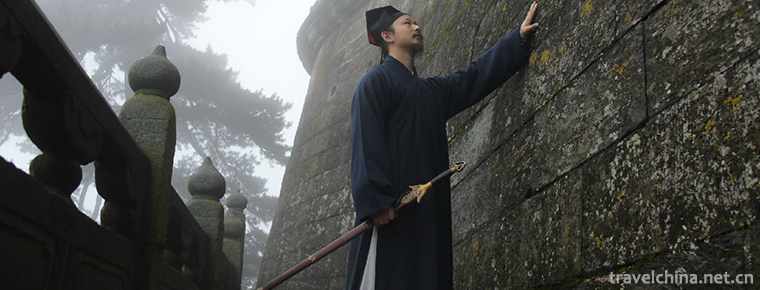
-
Wuhan Donghu Scenic Area
Wuhan Donghu Eco-tourism Scenic Area, referred to as Donghu Scenic Area, is located in the central city of Wuhan, Hubei Province. It is a national 5A-level tourist attraction, a demonstration site of .
Views: 182 Time 2018-12-12 -
Jiao Yulu Memorial Park
Jiao Yulu Memorial Park (formerly Jiao Yulu Martyrs Cemetery) was built in February 1966. It is located on the old embankment of the Yellow River in the north of Lankao County, Kaifeng City.
Views: 153 Time 2019-01-22 -
South Australia Island Tourist Area
Nanao Island is the only island county in Guangdong Province. It is composed of 37 small islands with a land area of 130.90 square kilometers (including 128.35 square kilometers of the main island) an.
Views: 149 Time 2019-02-07 -
Dai opera
Dai Opera, one of the national intangible cultural heritage, is a traditional drama in Jingpo Autonomous Prefecture of Dai Nationality in Dehong, Yunnan Province..
Views: 83 Time 2019-04-23 -
Restoration Techniques of Ancient Ceramics
Ancient ceramic restoration technology is a special artistic creation of comprehensive modeling, sculpture, color, calligraphy, painting, chemical industry, etc. Ancient Ceramics Restoration must be c.
Views: 688 Time 2019-05-01 -
Han tune
The mast of Hanzhong Diaoqu, a local traditional drama in Hanzhong City, Shaanxi Province, is one of the national intangible cultural heritages..
Views: 182 Time 2019-05-02 -
Clay sculpture
Clay sculpture, commonly known as "color sculpture" clay sculpture art, is an ancient and common folk art in Chinese folk tradition. That is to say, a kind of folk handicraft made of clay mo.
Views: 138 Time 2019-06-07 -
Talking in North Shaanxi
North Shaanxi storytelling is mainly popular in Yan'an and Yulin in the north of Shaanxi Province. At first, poor and blind people sing some legendary stories in the folk song minor of northern Shaanx.
Views: 205 Time 2019-06-13 -
Tiger dance shua laohu
Tiger dance, also known as "playing tiger" ("playing" Jiaozuo dialect refers to "playing" and "performing"), is said to have appeared in the Western Han Dynasty.
Views: 204 Time 2019-06-15 -
Beijing University of Chinese Medicine
Beijing University of Traditional Chinese Medicine is a national key university with traditional Chinese medicine as its main subject. It is directly under the management of the Ministry of Education..
Views: 132 Time 2019-09-22 -
cheongsam in the Republic of China
Since 1840, the western culture has been infiltrated into the local culture of the Qing Dynasty. Many coastal cities, especially Shanghai, have taken the lead in western culture because of the mixture of Chinese and foreign cultures, and their clothing has begun to undergo potential changes..
Views: 118 Time 2020-12-11 -
Neijiang ten sages
Ten sages are outstanding representatives of historical figures in Neijiang, which are described as "one division, two phases, three number one scholars and four great masters";.
Views: 340 Time 2020-12-16
